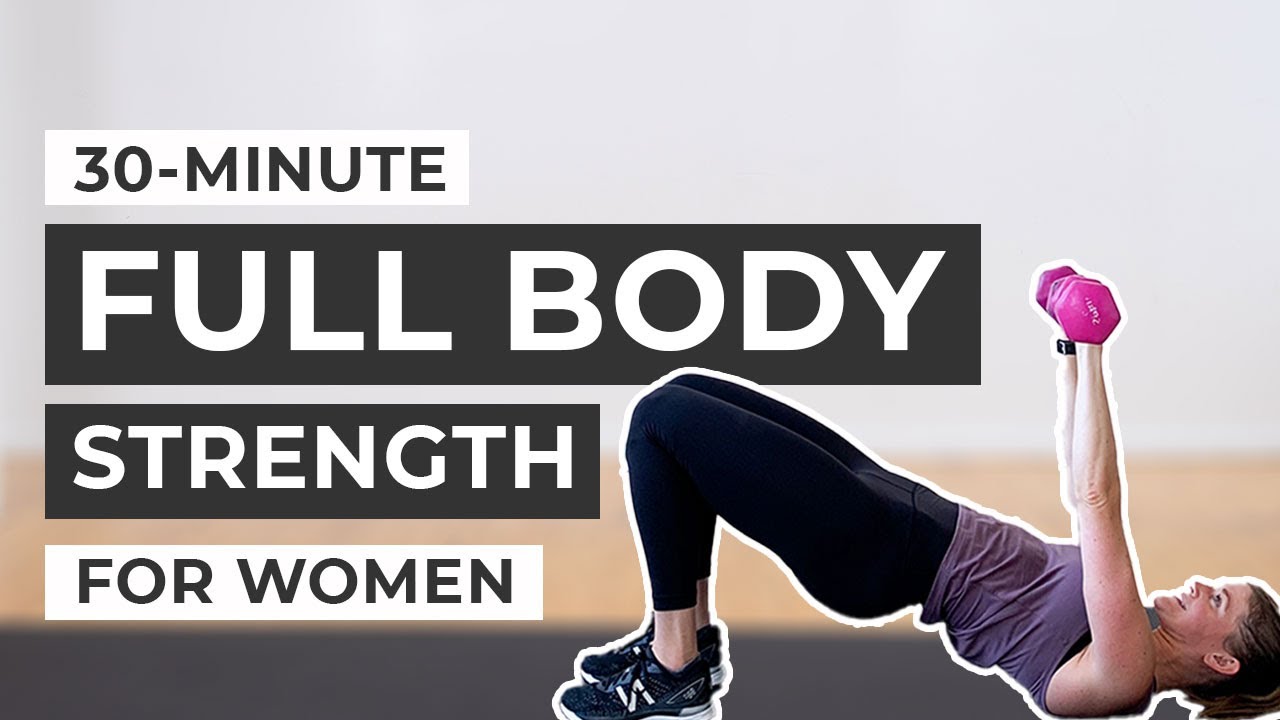Top strength training exercises for building muscle mass quickly? Think less “gymtimidation” and more “gains-piration”! This isn’t your grandpappy’s weightlifting; we’re diving into the science of sculpting superhero-level physique, fast. Forget endless cardio – we’re talking strategic strength training that’ll have you adding serious muscle mass in record time. Get ready to unleash your inner Adonis (or Amazon!).
We’ll uncover the secrets of compound exercises (think squats, deadlifts – the big guns!), and how to strategically incorporate isolation exercises to target those stubborn muscle groups. We’ll also navigate the labyrinth of sets, reps, and rest periods, plus the crucial role of nutrition and recovery. Get ready to transform your body and your fitness game!
Introduction: Top Strength Training Exercises For Building Muscle Mass Quickly
So, you want to build some serious muscle? Fantastic! Let’s ditch the flimsy “beach body” aspirations and delve into the glorious world of hypertrophy – the scientific term for making your muscles bigger and stronger. Think of it as upgrading your body’s hardware, adding more processing power (muscle fibers) to handle the demands of life (or crushing personal bests at the gym).Muscle hypertrophy isn’t some magical process; it’s a carefully orchestrated biological response to stress.
When you lift weights, you create microscopic tears in your muscle fibers. Your body, being the remarkably efficient machine it is, then repairs these tears, adding more muscle protein to the mix to make them stronger and, importantly, bigger. This process is fueled by a combination of proper nutrition (think protein, carbs, and healthy fats), adequate rest, and, of course, consistent and effective strength training.
Progressive Overload in Strength Training
Progressive overload is the cornerstone of any successful muscle-building program. It simply means consistently increasing the demands placed on your muscles over time. This could involve gradually increasing the weight you lift, the number of repetitions you perform, or the number of sets you complete. Imagine trying to build a skyscraper with the same tools and materials every day.
Want to pack on muscle like a superhero? Top strength training exercises for building muscle mass quickly involve compound movements like squats and deadlifts. But if you’re a woman looking to sculpt a physique worthy of Wonder Woman, check out this fantastic resource on effective weight lifting routines for women to build muscle for tailored guidance. Then, get back to those gains – remember, consistency is key to achieving those serious muscle-building results!
You wouldn’t get very far! Similarly, your muscles adapt to the stress you put them under, so you must continuously challenge them to continue growing. For example, if you can easily perform 10 reps of bicep curls with 20 pounds, you need to increase the weight, reps, or sets to stimulate further growth. Failure to progressively overload will lead to a plateau in your gains, leaving you feeling like you’re stuck in a fitness rut.
Training Styles for Muscle Growth
Several effective training styles can be used to build muscle. Each approach has its nuances and benefits, making it important to choose a method that aligns with your goals, experience level, and available time.There’s the classic bodybuilding approach, often characterized by higher reps (8-12) and multiple sets per exercise, focusing on isolating specific muscle groups. Then there’s powerlifting, which prioritizes strength gains through lower reps (1-5) with heavier weights, often using compound movements that work multiple muscle groups simultaneously.
Want to build muscle like a superhero? Top strength training exercises for building muscle mass quickly involve compound movements like squats and deadlifts. But before you go Thor-mode, remember to start smart! Check out this fantastic weight training workout routine for beginners to build strength and lose weight to build a solid foundation. Then, you can unleash those gains and conquer those top strength training exercises for building muscle mass quickly with confidence!
Finally, there’s the increasingly popular hybrid approach, incorporating elements of both bodybuilding and powerlifting, often using a variety of rep ranges and exercise selections to maximize overall muscle growth and strength. The key is consistency and finding a style that you enjoy and can stick with long-term. Remember, the best training style is the one you’ll actually do!
Compound Exercises for Maximal Muscle Growth
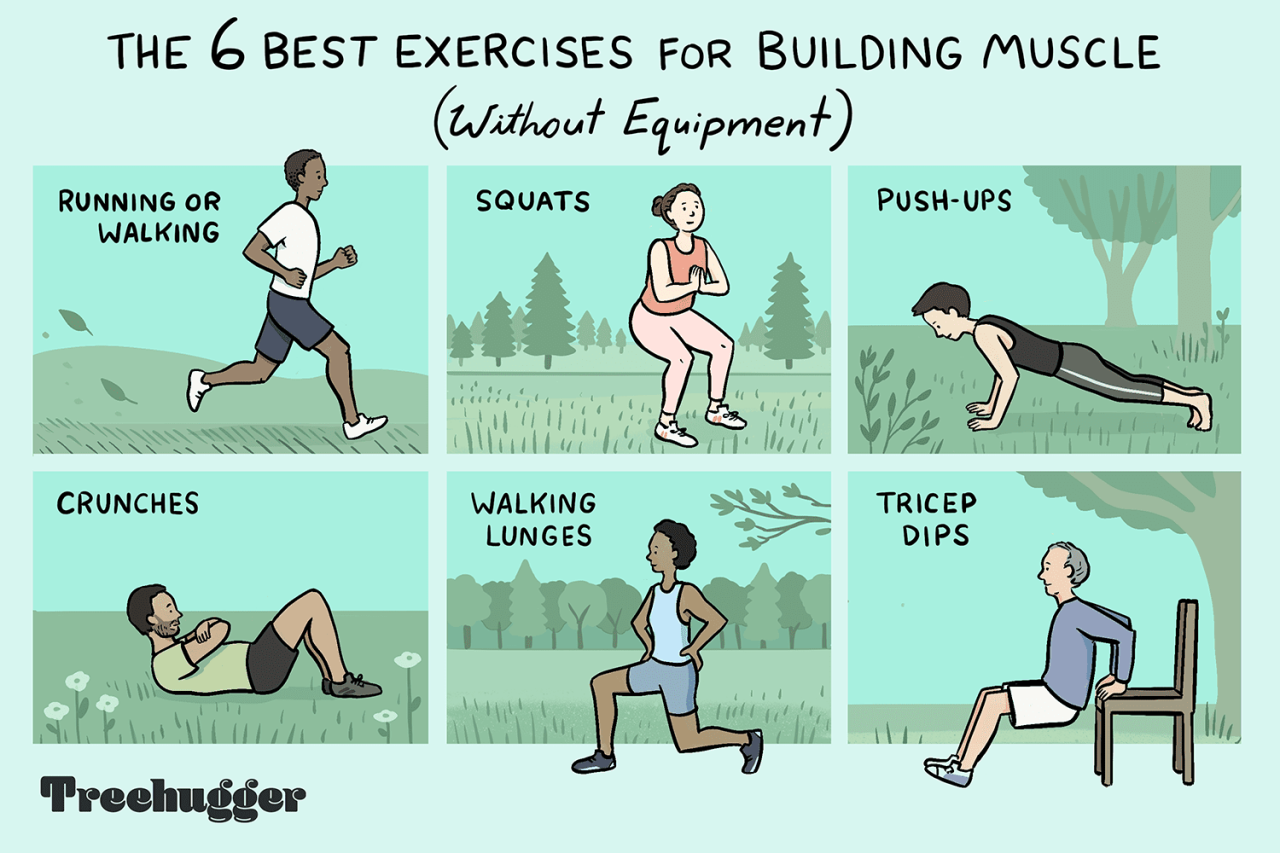
Building serious muscle mass isn’t about bicep curls and tricep extensions; it’s about unleashing the power of compound exercises. These movements work multiple muscle groups simultaneously, leading to greater overall growth, increased strength, and a serious boost to your metabolism (which means you can eat more delicious food without feeling guilty…mostly). Think of them as the superheroes of strength training, each with their own unique powers and capabilities.
Top 5 Compound Exercises for Maximal Muscle Growth
Choosing the right compound exercises is crucial for maximizing muscle growth. These five exercises form the bedrock of any effective strength training program, targeting major muscle groups and promoting overall strength and size. Remember, consistency and proper form are key – don’t try to lift more weight than your body can handle! That’s a recipe for injury, not gains.
Want to pack on muscle like a superhero? Top strength training exercises for building muscle mass quickly involve hitting those major muscle groups hard. But to truly maximize your gains, you need a solid foundation in fundamental exercises, which is where understanding muscular strength exercises comes in. Mastering these basics will unlock your full potential, propelling you towards those seriously impressive muscle gains.
So get ready to sculpt your physique!
| Exercise Name | Target Muscles | Mechanics | Benefits |
|---|---|---|---|
| Squats | Quads, Glutes, Hamstrings, Core | Standing with feet shoulder-width apart, lower your hips as if sitting in a chair, maintaining a straight back. | Builds massive leg and glute strength and size; improves overall lower body power; engages core muscles significantly. |
| Deadlifts | Hamstrings, Glutes, Back, Traps, Forearms | Bend at the hips and knees, keeping your back straight, and lift a weighted bar from the ground to a standing position. | Develops incredible overall strength; promotes significant muscle growth throughout the posterior chain; increases grip strength. |
| Bench Press | Chest, Shoulders, Triceps | Lie on a bench, grip a barbell slightly wider than shoulder-width, and lower the bar to your chest before pressing it back up. | Builds impressive chest size and strength; strengthens shoulders and triceps; improves upper body pushing power. |
| Overhead Press | Shoulders, Triceps, Upper Back | Stand with feet shoulder-width apart, holding a barbell or dumbbells at shoulder height, and press the weight overhead. | Develops powerful shoulders and improves overall upper body strength; enhances stability and balance; contributes to significant shoulder muscle growth. |
| Barbell Rows | Back, Biceps, Forearms | Bend at the hips, keeping your back straight, and pull a weighted bar towards your chest. | Builds a thick, powerful back; strengthens biceps and forearms; improves posture and overall upper body strength. |
Squats, Deadlifts, and Bench Presses: A Comparative Analysis
Squats, deadlifts, and bench presses are the holy trinity of compound exercises. Each excels in different areas, contributing to overall muscle growth in unique ways. Squats primarily target the lower body, building powerful legs and glutes. Deadlifts are the king of full-body exercises, engaging almost every muscle group from your toes to your traps. Bench presses focus on the upper body, building chest, shoulder, and tricep strength and size.
While each exercise has its strengths, incorporating all three into your routine is the ultimate strategy for maximizing muscle growth across your entire body. Think of it like a well-rounded portfolio: you wouldn’t put all your eggs in one basket, would you?
Proper Form and Execution of Top 5 Compound Exercises
Mastering proper form is crucial to maximize results and prevent injuries. Let’s break down some key points:Squats: Keep your back straight, chest up, and core engaged. Avoid letting your knees cave inwards. Imagine sitting back into a chair – this will help you maintain proper form.Deadlifts: Maintain a neutral spine throughout the lift, engaging your legs and back simultaneously.
Avoid rounding your back – this is a major injury risk.Bench Press: Keep your feet flat on the floor, grip the bar firmly, and lower it slowly to your chest. Avoid bouncing the bar off your chest.Overhead Press: Maintain a stable base, keeping your core tight and your back straight. Avoid arching your back excessively.Barbell Rows: Maintain a straight back, pull the bar towards your chest, squeezing your shoulder blades together.
Avoid using momentum to lift the weight. Think controlled movements.Common mistakes include using excessive weight (ego lifting!), compromising form for heavier loads, and neglecting proper warm-up and cool-down routines. Remember, slow and steady wins the race (and the muscle!).
Want to build muscle like a superhero? Top strength training exercises for building muscle mass quickly include squats, deadlifts, and bench presses – the holy trinity of gains! But remember, a solid plan is key, and that’s where a well-structured strength training program for weight loss and muscle building comes in handy. It’ll help you maximize those gains and avoid injury, making those top exercises even more effective! So, get ready to sculpt some serious muscle.
Isolation Exercises for Targeted Muscle Development
So, you’ve conquered the compound lifts, building a solid foundation of strength and size. But now it’s time to sculpt those muscles, to chisel away at those stubborn areas that often get left behind in the compound lift frenzy. Enter: isolation exercises – the secret weapon for targeted muscle growth and a physique that screams “I know what I’m doing!”Isolation exercises, unlike their compound counterparts, focus on one muscle group at a time, allowing for a more concentrated and intense workout.
Think of them as the detail work after you’ve built the basic structure of your house. You need both for a truly impressive result! They’re crucial for addressing muscle imbalances, improving mind-muscle connection, and achieving that final level of muscular definition.
Benefits of Incorporating Isolation Exercises
Incorporating isolation exercises into your routine offers several key advantages. First, they allow for a deeper, more targeted muscle contraction, leading to increased hypertrophy (muscle growth). Second, isolation exercises can help correct muscle imbalances created by over-reliance on compound movements. For example, if your bench press is significantly stronger than your overhead press, adding isolation exercises for your shoulders can help even things out, preventing injuries and promoting balanced muscle development.
Finally, focusing on individual muscle groups improves your mind-muscle connection, allowing you to better feel and control the targeted muscle during each rep. This enhanced control leads to better form and more effective training.
Five Isolation Exercises for Neglected Muscle Groups
Here are five isolation exercises that effectively target often-neglected muscle groups, offering a path to well-rounded muscular development:
- Bicep Curls: This classic exercise isolates the biceps brachii, a muscle often under-developed in individuals who primarily focus on compound movements like pull-ups or rows. Imagine a perfectly sculpted bicep peak – that’s the magic of focused bicep curls.
- Triceps Extensions: The triceps brachii, the muscle on the back of your upper arm, is often neglected. Triceps extensions directly target this muscle group, leading to increased size and definition. Picture those triceps looking like horseshoes – strong and defined.
- Lateral Raises: This exercise targets the medial deltoids, the side muscles of your shoulders. Often overshadowed by the anterior (front) deltoids, strengthened medial deltoids provide better shoulder stability and a more aesthetically pleasing shoulder shape. Think broader, more impressive shoulders.
- Calf Raises: Let’s not forget our lower legs! Calf raises isolate the gastrocnemius and soleus muscles, crucial for both aesthetics and functional strength. Imagine powerful, sculpted calves that command attention.
- Hamstring Curls: While hamstrings are worked during compound movements like deadlifts and squats, hamstring curls provide a more intense, isolated focus on these often-underdeveloped muscles. Strong hamstrings are crucial for athletic performance and injury prevention. Think powerful, defined hamstrings that enhance your overall physique.
Sample Workout Routine Incorporating Compound and Isolation Exercises
This routine blends compound and isolation exercises for a balanced approach to muscle growth. Remember to adjust the weight and reps based on your individual fitness level.
Day 1: Upper Body
- Bench Press (Compound): 3 sets of 8-12 reps
- Overhead Press (Compound): 3 sets of 8-12 reps
- Barbell Rows (Compound): 3 sets of 8-12 reps
- Bicep Curls (Isolation): 3 sets of 12-15 reps
- Triceps Extensions (Isolation): 3 sets of 12-15 reps
- Lateral Raises (Isolation): 3 sets of 12-15 reps
Day 2: Lower Body
- Squats (Compound): 3 sets of 8-12 reps
- Deadlifts (Compound): 1 set of 5 reps, 1 set of 3 reps, 1 set of 1 rep (increase weight each set)
- Hamstring Curls (Isolation): 3 sets of 12-15 reps
- Calf Raises (Isolation): 3 sets of 15-20 reps
Training Variables for Optimal Muscle Growth
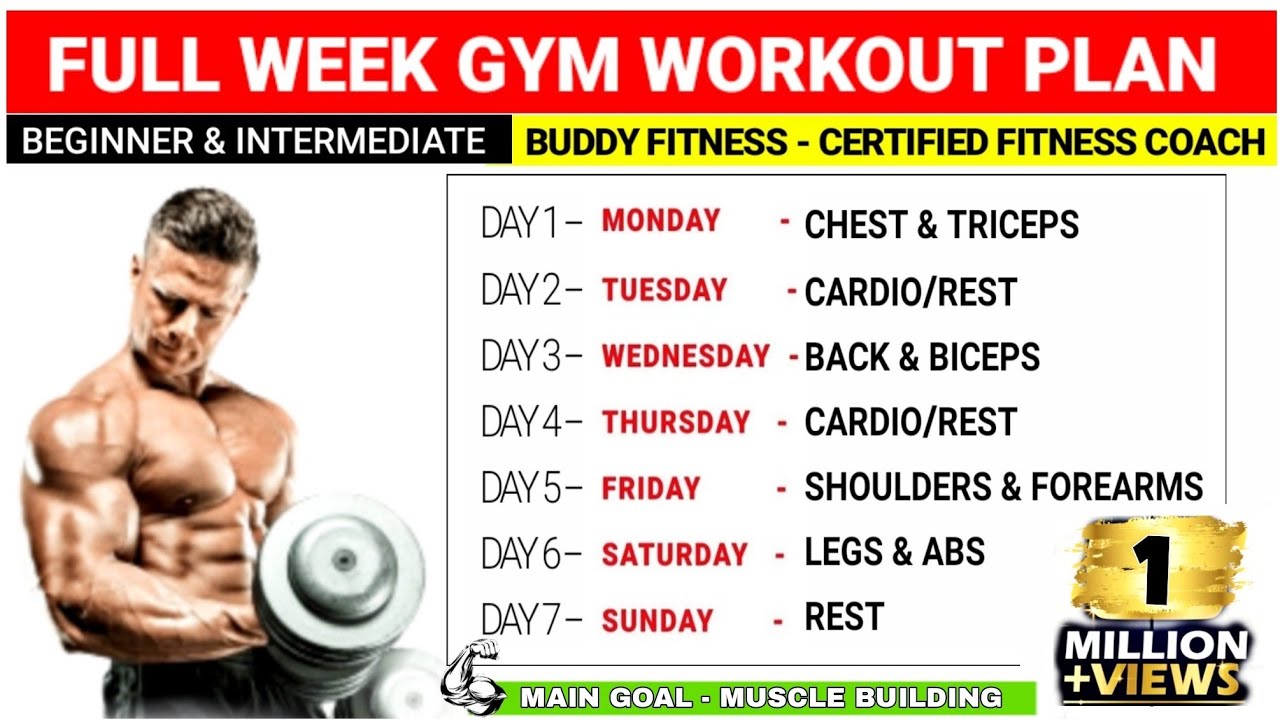
So, you’ve nailed the exercises, now let’s talk about thehow* – the nitty-gritty details that transform those reps into serious muscle gains. Think of it as fine-tuning your muscle-building engine for maximum horsepower. We’re talking sets, reps, rest, and frequency – the unsung heroes of hypertrophy.
Getting the training variables right is crucial for optimal muscle growth. It’s not just about lifting heavy; it’s about strategically manipulating these variables to trigger the right hormonal responses and promote muscle protein synthesis. Think of it like baking a cake – you need the right ingredients (exercises), but also the right recipe (training variables) to get a perfect result.
Sets, Reps, and Rest Periods for Muscle Hypertrophy
The magic trio of muscle growth. Sets determine the number of times you perform a given exercise, reps are how many repetitions you do within each set, and rest periods are the breaks you take between sets. Each plays a vital role. For example, higher reps (12-15) with shorter rest periods (30-60 seconds) tend to favor muscular endurance and increased blood flow, while lower reps (1-5) with longer rest periods (2-5 minutes) are typically used for maximal strength gains.
However, for optimal hypertrophy, a sweet spot often lies somewhere in the middle, with rep ranges of 8-12 and rest periods around 60-90 seconds. This allows for sufficient muscle fatigue while maintaining enough energy for each subsequent set. Experimentation is key to finding what works best for your body and individual goals.
Training Frequency and its Impact on Muscle Growth, Top strength training exercises for building muscle mass quickly
How often you hit the gym matters! Training frequency refers to how many times per week you train a specific muscle group. Training each muscle group twice a week generally allows for sufficient recovery while still providing ample stimulus for growth, although this can vary depending on factors such as training intensity and individual recovery capabilities. A study published in the Journal of Strength and Conditioning Research indicated that training a muscle group twice per week, with sufficient volume and intensity, is superior to once-a-week training for muscle growth.
This doesn’t mean you need to train every muscle group twice a week, however, a well-structured program will account for appropriate recovery.
Different Training Splits and Their Advantages
Think of training splits as your workout calendar. They dictate how you divide your training across different muscle groups throughout the week.
Several popular splits exist, each with its pros and cons. The choice often depends on individual preferences, training experience, and recovery capacity.
- Upper/Lower Split: You train your upper body one day and your lower body the next. This allows for more frequent training of each muscle group, leading to greater overall training volume. This is ideal for individuals who have a moderate to high level of training experience and a good recovery ability.
- Push/Pull/Legs Split: This split categorizes exercises based on the movement pattern. “Push” exercises (chest, shoulders, triceps), “Pull” exercises (back, biceps), and “Legs” (quads, hamstrings, calves) are trained on separate days. This allows for better focus on each muscle group and reduces the risk of muscle imbalances.
- Full-Body Split: You train your entire body in each workout session. This is a great choice for beginners or individuals with limited time, as it allows for high training frequency across all muscle groups. However, it requires careful attention to training volume and intensity to avoid overtraining.
Nutrition and Recovery for Muscle Growth
Building serious muscle isn’t just about grunting in the gym; it’s a carefully orchestrated symphony of sweat, iron, and – crucially – the right fuel. Think of your body as a high-performance sports car: you wouldn’t fill it with regular unleaded, would you? No, you’d need premium fuel, and for your muscles, that fuel is a balanced diet and sufficient recovery.
Want to pack on muscle like a superhero? Top strength training exercises for building muscle mass quickly often involve compound movements. But if your home gym’s looking a little…sparse, don’t despair! Check out this awesome resource for best exercises for strength training and weight loss at home gym to maximize your gains with limited equipment. Then, get back to those killer muscle-building workouts – you’ll be bench-pressing cars in no time!
Ignoring this crucial aspect is like trying to win a race with a flat tire.Macronutrient intake plays a pivotal role in muscle growth. Getting the right balance of protein, carbohydrates, and fats is essential for providing the building blocks your muscles need to repair and grow after intense workouts. Insufficient intake in any of these areas can significantly hinder your progress, leaving you feeling like you’re pushing a boulder uphill in flip-flops.
Want to sculpt a physique that’d make Michelangelo jealous? Top strength training exercises for building muscle mass quickly involve compound movements like squats and deadlifts. But before you go Hercules on the weights, check out this beginner weight training workout plan for strength and weight loss to build a solid foundation. Then, you can unleash your inner muscle-bound titan with those advanced exercises and really see those gains explode!
Macronutrient Intake for Muscle Growth
Protein is the undisputed king of muscle building. It provides the amino acids necessary for muscle protein synthesis – the process of building and repairing muscle tissue. Aim for a daily protein intake of around 1.6-2.2 grams per kilogram of body weight. Think lean meats, poultry, fish, eggs, dairy, legumes, and tofu – the protein powerhouses. Carbohydrates are your muscles’ preferred energy source, fueling your workouts and replenishing glycogen stores (your muscles’ energy reserves).
Choose complex carbohydrates like brown rice, quinoa, oats, and sweet potatoes over refined sugars. Fats, often unfairly demonized, are crucial for hormone production, cell function, and nutrient absorption. Include healthy fats like avocados, nuts, seeds, and olive oil in your diet.
The Importance of Sleep and Stress Management
While you’re hitting the weights, your muscles are actually doing the heavy liftingduring recovery*. Sleep is where the magic happens; it’s when your body repairs and rebuilds muscle tissue. Aim for 7-9 hours of quality sleep per night. Think of it as your muscles’ mandatory downtime – crucial for peak performance. Stress, on the other hand, is a muscle-growth saboteur.
Chronic stress elevates cortisol levels, a hormone that can interfere with muscle growth and recovery. Incorporate stress-reducing activities into your routine, such as meditation, yoga, or spending time in nature.
Sample Meal Plan for Muscle Growth
This sample meal plan illustrates appropriate macronutrient ratios for muscle growth, aiming for approximately 40% carbohydrates, 30% protein, and 30% fats. Remember, individual needs vary, so adjust portion sizes based on your activity level and body weight. This is a sample, not a prescription! Consult a nutritionist for personalized guidance.
| Meal | Description | Approximate Macronutrient Ratio (Carb/Protein/Fat) |
|---|---|---|
| Breakfast | Oatmeal with berries, nuts, and protein powder | 40/30/30 |
| Lunch | Grilled chicken salad with quinoa and avocado | 30/40/30 |
| Dinner | Salmon with roasted sweet potatoes and broccoli | 35/35/30 |
| Snacks | Greek yogurt with fruit, a handful of almonds, or a protein shake | Varied, but generally higher in protein |
Remember: Consistency is key! Sticking to a well-planned nutrition and recovery strategy is far more important than any single workout.
Addressing Common Mistakes and Plateaus
So, you’ve been hitting the gym, diligently following your program, fueling your body like a well-oiled machine, and yet… the gains have stalled. Don’t despair, fellow muscle-builder! Plateaus are as common as protein shakes in a gym locker room. Often, they’re the result of avoidable mistakes. Let’s dissect these common pitfalls and equip you with the strategies to smash through those stubborn plateaus and resume your muscle-building journey.Many common mistakes hinder progress, ranging from poor form to inadequate recovery.
Ignoring these issues can lead to injury and impede muscle growth, making your efforts less effective. Addressing these issues is crucial for maximizing your results and avoiding unnecessary frustration.
Common Strength Training Mistakes Hindering Muscle Growth
Poor form is a major culprit. Lifting weights with improper technique not only reduces the effectiveness of your workout but also significantly increases your risk of injury. Imagine trying to build a house with wonky bricks – it’s not going to stand! Similarly, incorrect form prevents muscles from being properly stimulated, hindering growth. Another frequent mistake is neglecting progressive overload.
Your muscles adapt quickly, so if you’re constantly doing the same weight and reps, you’ll eventually hit a wall. Think of it like this: your muscles are like a demanding child; they need constant challenges to keep growing. Finally, insufficient rest and recovery are often overlooked. Muscles grow during rest, not during the workout itself. Ignoring this crucial element will lead to overtraining, hindering progress and potentially causing injury.
Strategies for Overcoming Training Plateaus
Overcoming training plateaus requires a multifaceted approach. It’s not just about changing your workout routine; it’s about analyzing your entire training regimen, nutrition, and recovery strategies. A holistic approach is key to breaking through those stubborn barriers and seeing significant gains.
- Vary Your Training Program: Introduce new exercises, change the rep ranges, or alter the order of your exercises. This keeps your muscles guessing and prevents adaptation. For example, if you’ve been doing bench presses for months, try incline or decline variations to target different muscle fibers.
- Focus on Progressive Overload: Gradually increase the weight, reps, or sets over time. This continuous challenge is essential for muscle growth. Start small, track your progress, and increase the weight or reps when you feel comfortable. Don’t be afraid to ask for help with proper form from a qualified trainer.
- Prioritize Proper Form: Master the correct technique for each exercise. This ensures you’re targeting the right muscles and minimizing injury risk. Consider working with a personal trainer to ensure proper form, especially when starting a new exercise.
- Optimize Rest and Recovery: Get enough sleep (7-9 hours per night), prioritize stress management techniques, and allow your muscles adequate time to recover between workouts. Consider incorporating active recovery methods like light cardio or stretching.
- Re-evaluate Your Nutrition: Ensure you’re consuming enough protein (around 1 gram per pound of body weight), carbohydrates, and healthy fats to support muscle growth. Consider consulting a registered dietitian or nutritionist to create a personalized nutrition plan.
- Consider Deload Weeks: Incorporate planned periods of reduced training volume and intensity to allow your body to fully recover and prevent overtraining. A deload week might involve reducing the weight, reps, or sets by 50% for a week, then returning to your regular program.
Illustrative Examples of Effective Workouts
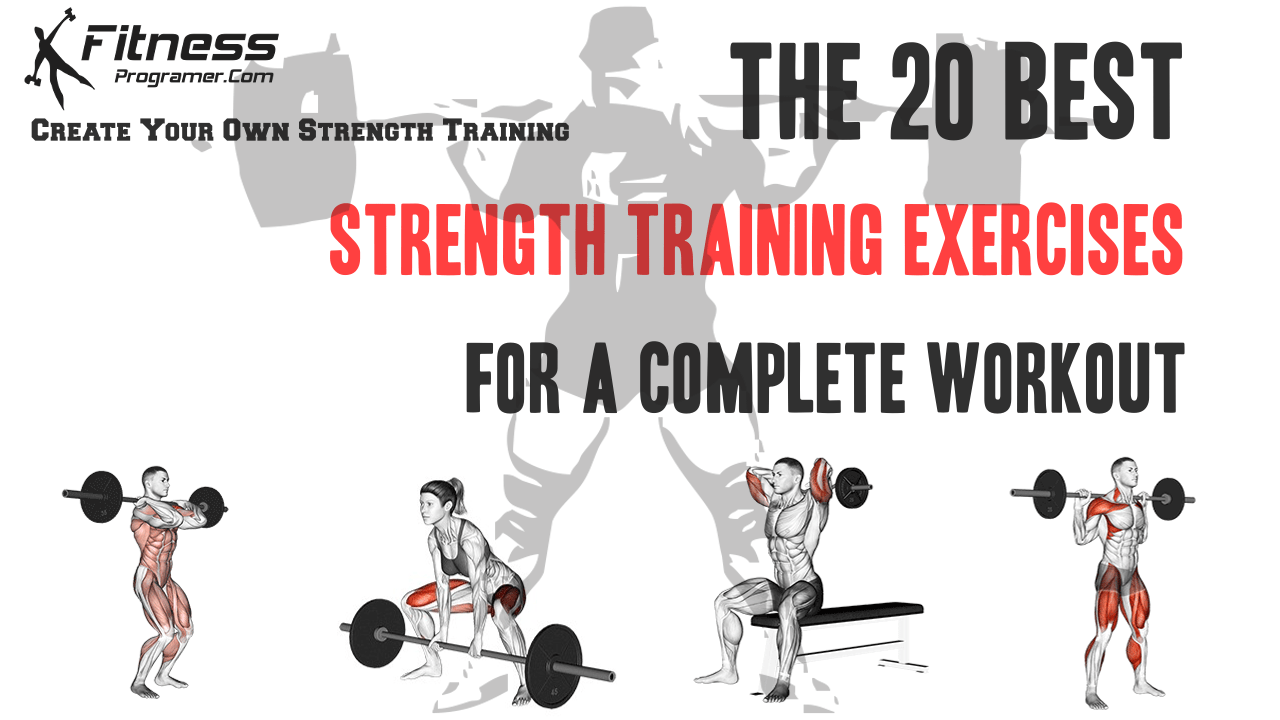
Ready to ditch the flabby and embrace the fabulously fit? Let’s dive into some sample workout routines designed to help you sculpt your physique. Remember, consistency is key – even small, regular efforts will yield impressive results over time. These examples are starting points; adjust the weight, reps, and sets to suit your individual strength and recovery capabilities.
Listen to your body!
Choosing the right workout routine depends on your current fitness level. Beginners should focus on building a solid foundation of strength and learning proper form. Intermediate lifters can increase the intensity and volume. Advanced lifters can incorporate more advanced techniques and variations.
Beginner Full-Body Workout
This routine is perfect for those new to strength training. It focuses on compound movements that work multiple muscle groups simultaneously, promoting overall strength and muscle growth. Aim for 2-3 sessions per week, allowing at least one day of rest between workouts.
- Squats: 3 sets of 8-12 reps
- Push-ups (on knees if needed): 3 sets of as many reps as possible (AMRAP)
- Rows (using dumbbells or resistance bands): 3 sets of 8-12 reps
- Overhead press (using dumbbells or resistance bands): 3 sets of 8-12 reps
- Plank: 3 sets, hold for 30-60 seconds
Intermediate Upper/Lower Body Split
This routine splits your workouts into upper and lower body days, allowing for more focused training and increased volume. Remember to prioritize proper form over lifting heavy weights, especially as you increase intensity.
- Upper Body:
- Bench press: 3 sets of 6-8 reps
- Overhead press: 3 sets of 8-12 reps
- Bent-over rows: 3 sets of 8-12 reps
- Bicep curls: 3 sets of 10-15 reps
- Triceps extensions: 3 sets of 10-15 reps
- Lower Body:
- Squats: 3 sets of 6-8 reps
- Deadlifts: 1 set of 5 reps, 1 set of 3 reps, 1 set of 1 rep (increasing weight each set)
- Leg press: 3 sets of 10-15 reps
- Hamstring curls: 3 sets of 10-15 reps
- Calf raises: 3 sets of 15-20 reps
Advanced Push/Pull/Legs Split
This advanced routine further divides your workouts into push, pull, and leg days, maximizing muscle growth and allowing for greater specialization. This split requires a higher level of strength and experience. Consider incorporating advanced training techniques such as drop sets, supersets, and rest-pause sets to further challenge your muscles.
- Push Day:
- Bench press: 4 sets of 5-8 reps
- Incline dumbbell press: 3 sets of 8-12 reps
- Overhead press: 3 sets of 8-12 reps
- Triceps pushdowns: 3 sets of 12-15 reps
- Pull Day:
- Pull-ups (or lat pulldowns): 4 sets of as many reps as possible (AMRAP)
- Bent-over rows: 3 sets of 6-8 reps
- Seated cable rows: 3 sets of 10-15 reps
- Bicep curls: 3 sets of 12-15 reps
- Leg Day:
- Squats: 4 sets of 5-8 reps
- Deadlifts: 1 set of 5 reps, 1 set of 3 reps, 1 set of 1 rep (increasing weight each set)
- Leg press: 3 sets of 10-15 reps
- Leg extensions: 3 sets of 12-15 reps
- Hamstring curls: 3 sets of 12-15 reps
- Calf raises: 3 sets of 15-20 reps
Final Review
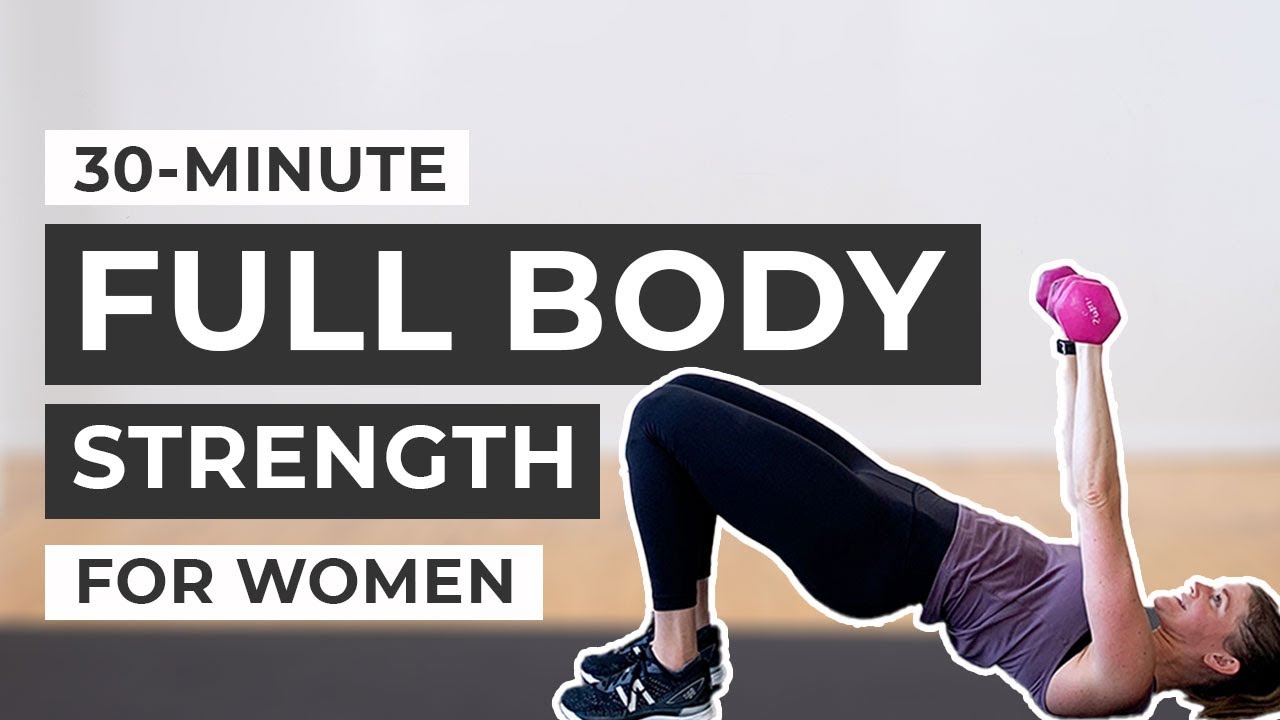
So, there you have it – your fast track to a more muscular you! Remember, consistency is key. Don’t be afraid to experiment, listen to your body, and celebrate those hard-earned gains. Building muscle is a journey, not a race, but with the right exercises and approach, you’ll be amazed at how quickly you can achieve your goals.
Now go forth and conquer those weights!
